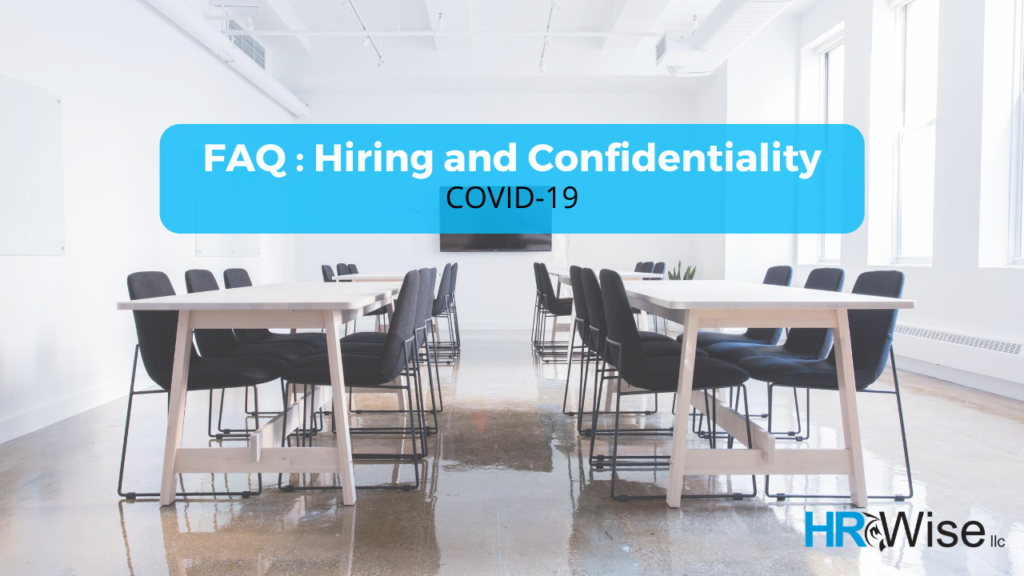Most if not all businesses are adjusting to the new guidelines and regulations put in place because of the COVID-19 Pandemic. At HR Wise llc we are continuously working to keep the most up to date information for our clients to provide guidance during this trivial time. In this blog you will find the most frequently asked questions we have received in regards to hiring and on-boarding and confidentiality. Our very own Client Human Resources Manager Marwa Morsi gathered parts of this information from The U.S. Equal Opportunity Commission.
Hiring and On-boarding
Yes. An employer may screen job applicants for symptoms of COVID-19 after making a conditional job offer, as long as it does so for all new hires in the same type of job. This ADA rule applies whether or not the applicant has a disability.
Yes. Any medical exams are permitted after an employer has made a conditional offer of employment. However, employers should be aware that some people with COVID-19 do not have a fever.
Yes. According to current CDC guidance, an individual who has COVID-19 or symptoms associated with it should not be in the workplace.
No. The fact that the CDC has identified those who are 65 or older, or pregnant women, as being at greater risk does not justify unilaterally postponing the start date or withdrawing a job offer. However, an employer may choose to allow telework or to discuss with these individuals if they would like to postpone the start date.
Confidentiality of Medical Information
The ADA requires that all medical information about a particular employee be stored separately from the employee’s personnel file, thus limiting access to this confidential information. An employer may store all medical information related to COVID-19 in existing medical files. This includes an employee’s statement that he has the disease or suspects he has the disease, or the employer’s notes or other documentation from questioning an employee about symptoms.
Yes. The employer needs to maintain the confidentiality of this information.
Yes. But NEVER disclose the name of the employee to other employees in the workplace.

